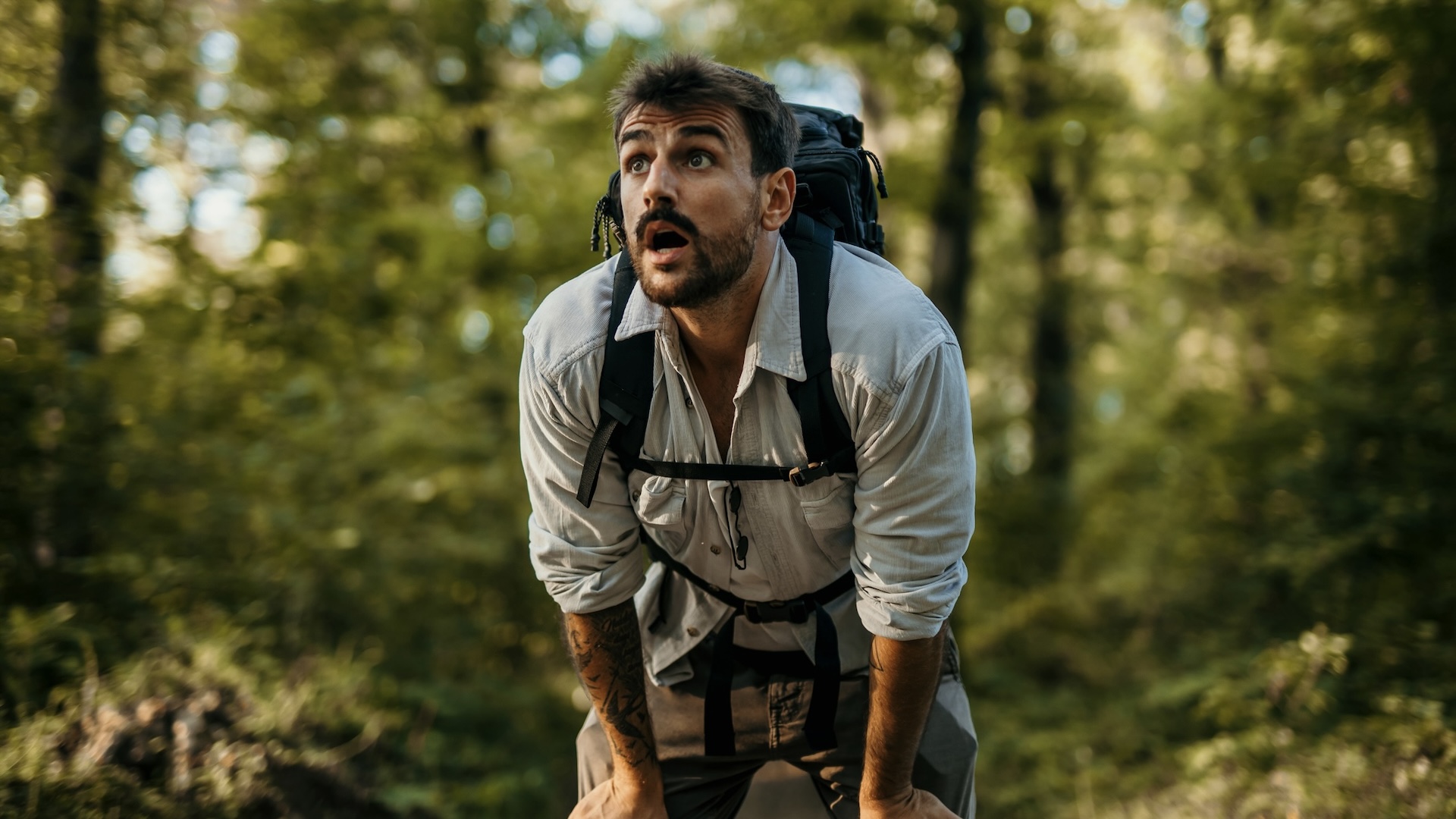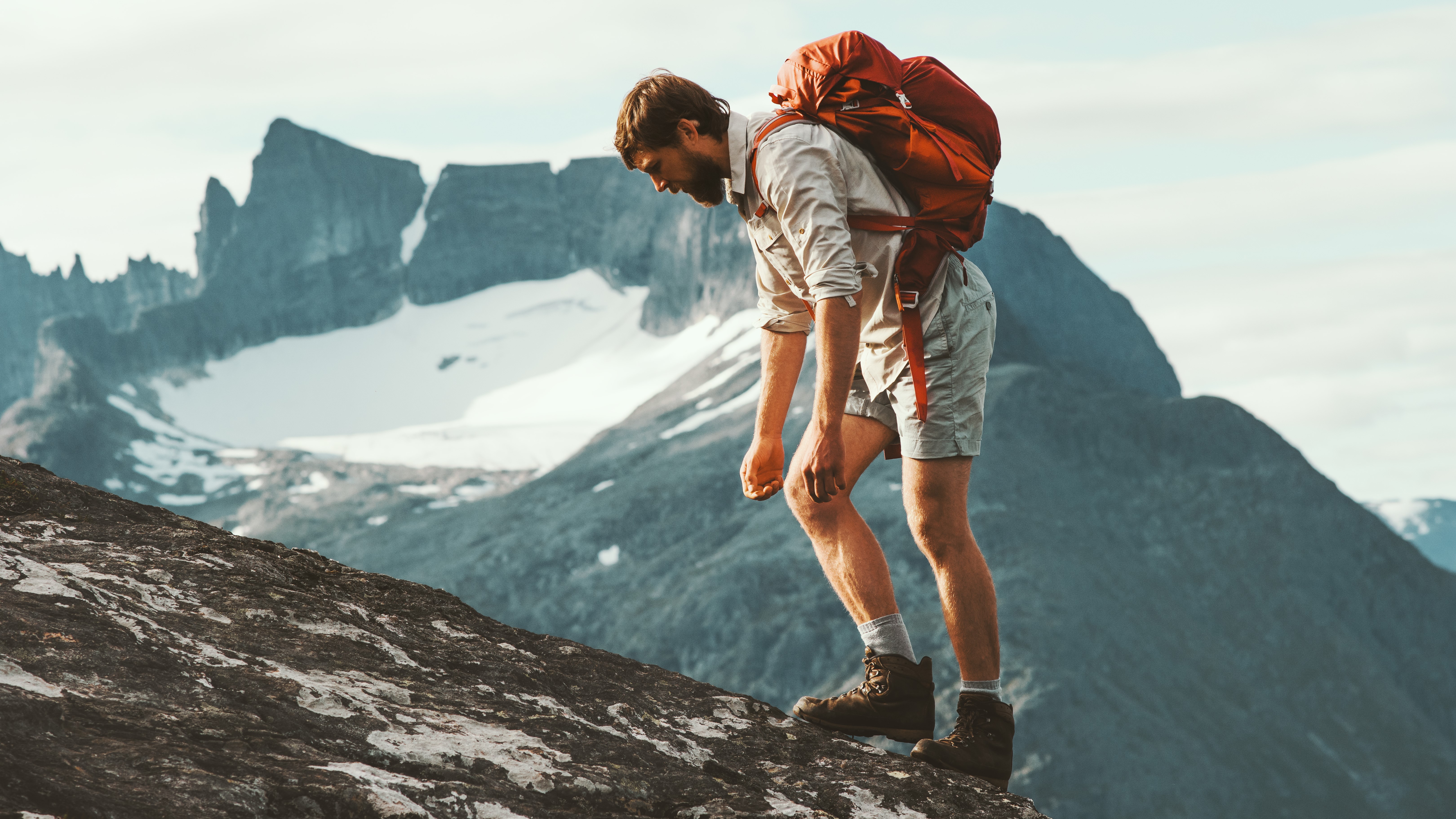Would you tie a helium balloon to your backpack to make hiking easier? Influencer left deflated by "lazy man climbing" experiment
A Chinese social media influencer recently became the latest to put this unusual method to the test

Hiking uphill with a heavy backpack is hard work, and nothing can really prepare you for it except training. Unless you have access to a large balloon and a helium supply, that is.
A Chinese social media influencer recently became the latest to put this unusual method to the test when he tied a helium balloon to his backpack in an attempt to lighten his load while hiking in Zhejiang province.
According to reporting in the South China Morning Post, the fitness blogger, who goes by the surname Pu, released a video on Douyin – China's version of Tiktok – in which he initially finds the experiment to be successful.
“I am carrying the bag, but I don’t feel its weight at all because of the balloon,” says Pu in the video.
“I feel something is dragging me upwards. This should be the way most suitable for lazy men to climb mountains.”
Further up the mountain, the wind is taken out of Pu's sails when the balloon is popped by a tree branch. Still, "it was a fun experience,” Pu concludes.

Pu isn't the first hiker to give what he calls the "lazy man mountain climbing method" a go after engineer Brendan Carberry shared a video to YouTube earlier this year experimenting with the idea.
All the latest inspiration, tips and guides to help you plan your next Advnture!
As Pu's experiment reveals, however, there are definite setbacks to choosing helium over training. For starters, balloons aren't known to be the most robust piece of engineering known to man, and hiking trails are well known to be littered with hazards of the sharp variety. Put too much helium in and a gust of wind could snatch your pack – and even you – off the ground.
How to make hiking with a pack easier
If you're struggling with hiking uphill with a backpack, a helium balloon isn't your best option. There are, however, three things you can do: train, make your backpack lighter, and use trekking poles.
To get in better shape for hiking, it's helpful to increase your daily mileage and add in lots of stairs (gradually increasing the weight on your back) but don't forget about strength training for your legs too. Learn more in our article on how to get fit for hiking.
If your backpack is simply too heavy, it sounds like you need to invest in some lighter gear. A daypack should only have essentials like a waterproof jacket, water, snacks and a first aid kit, so it shouldn't be that heavy, but for wilderness expeditions and backpacking trips, camping gear has gotten a lot lighter in recent years. Check out our guide to the best lightweight camping gear and shave pounds and ounces off your pack.
Once your pack is loaded up, read our article on how to adjust a backpack so that the weight is off your shoulders (without the aid of a balloon) then consider hiking with trekking poles.
A 2019 study published in the European Journal of Applied Physiology found that using poles is slightly more economical than walking without poles, and that the Rate of Perceived Exertion goes down with pole use, which staves off feelings of fatigue. Read our article on how to use trekking poles to get the most out of your new hiking gear.
Julia Clarke is a staff writer for Advnture.com and the author of the book Restorative Yoga for Beginners. She loves to explore mountains on foot, bike, skis and belay and then recover on the the yoga mat. Julia graduated with a degree in journalism in 2004 and spent eight years working as a radio presenter in Kansas City, Vermont, Boston and New York City before discovering the joys of the Rocky Mountains. She then detoured west to Colorado and enjoyed 11 years teaching yoga in Vail before returning to her hometown of Glasgow, Scotland in 2020 to focus on family and writing.

